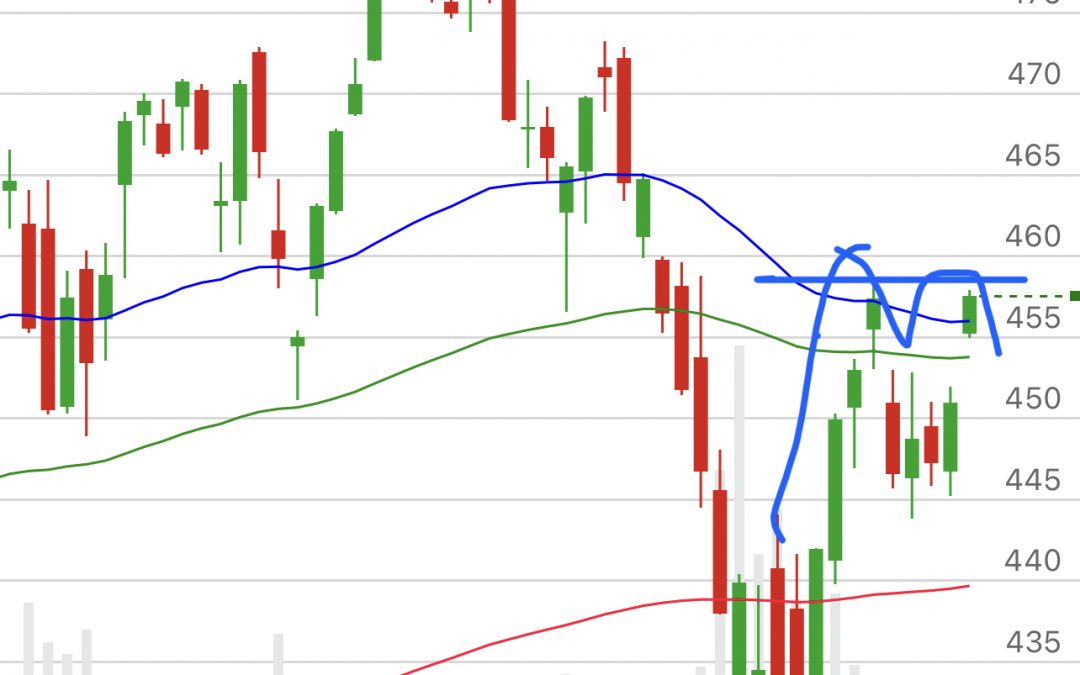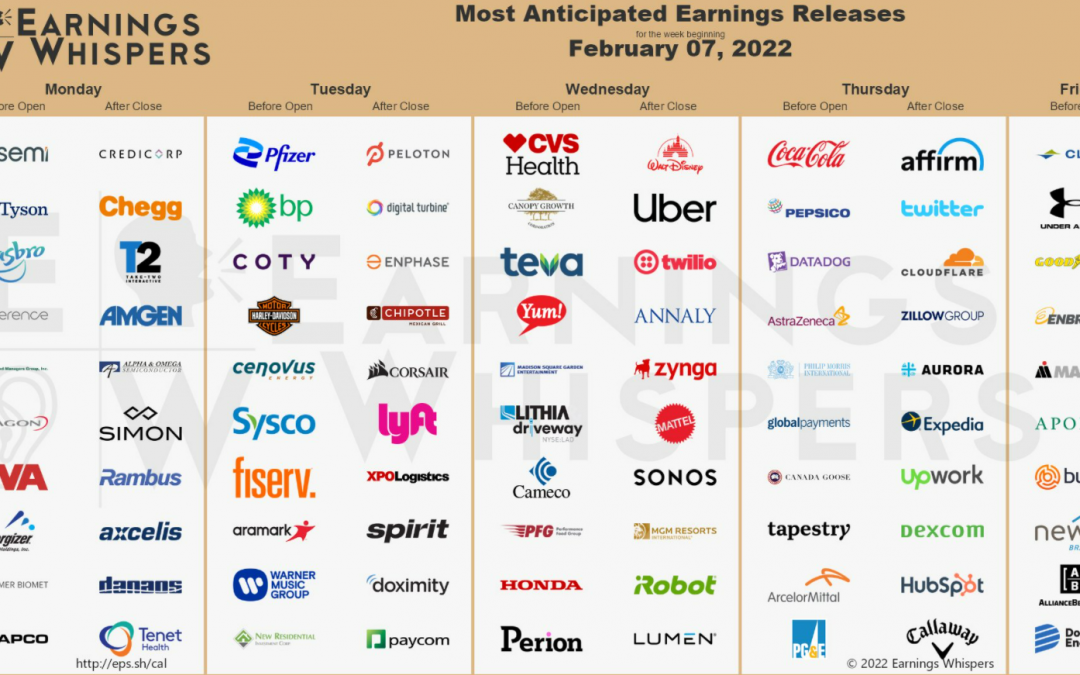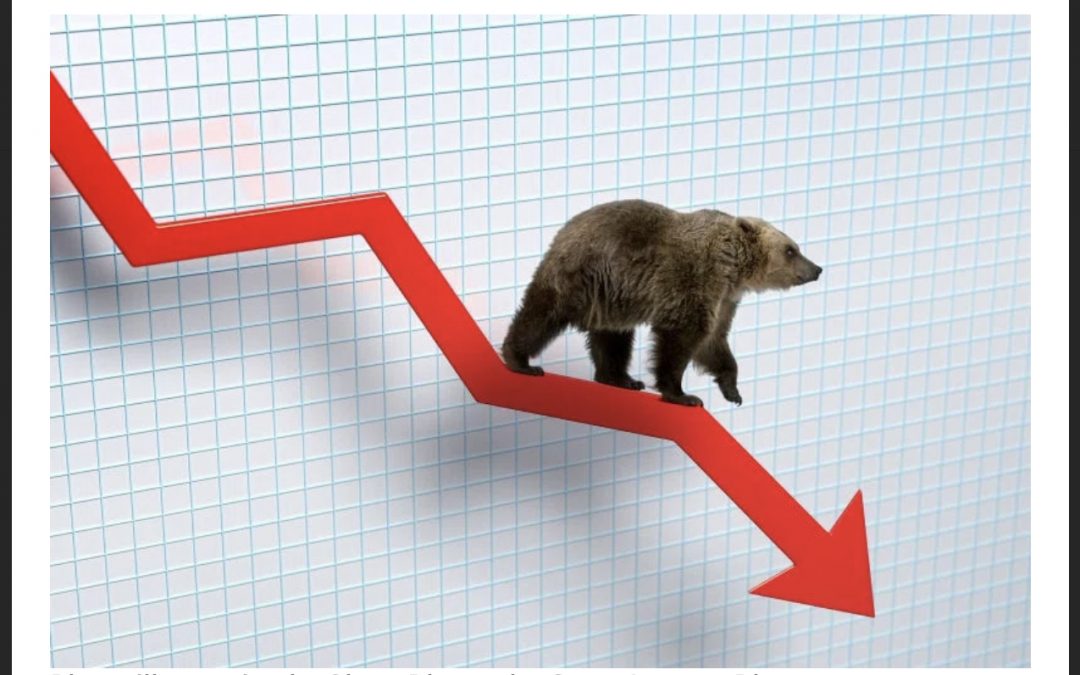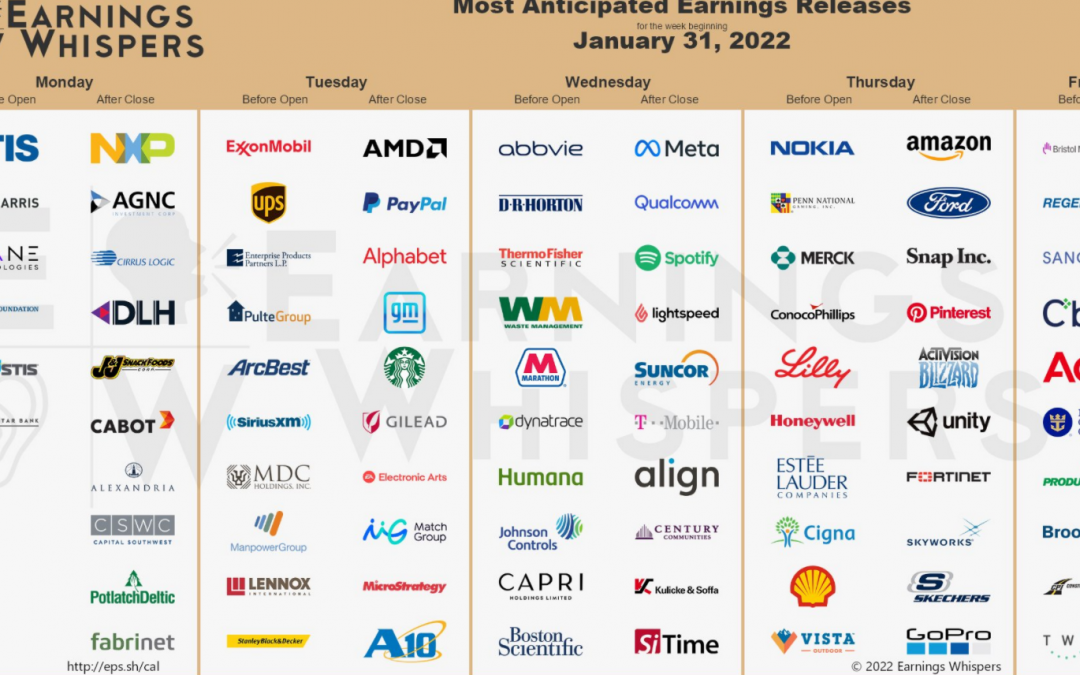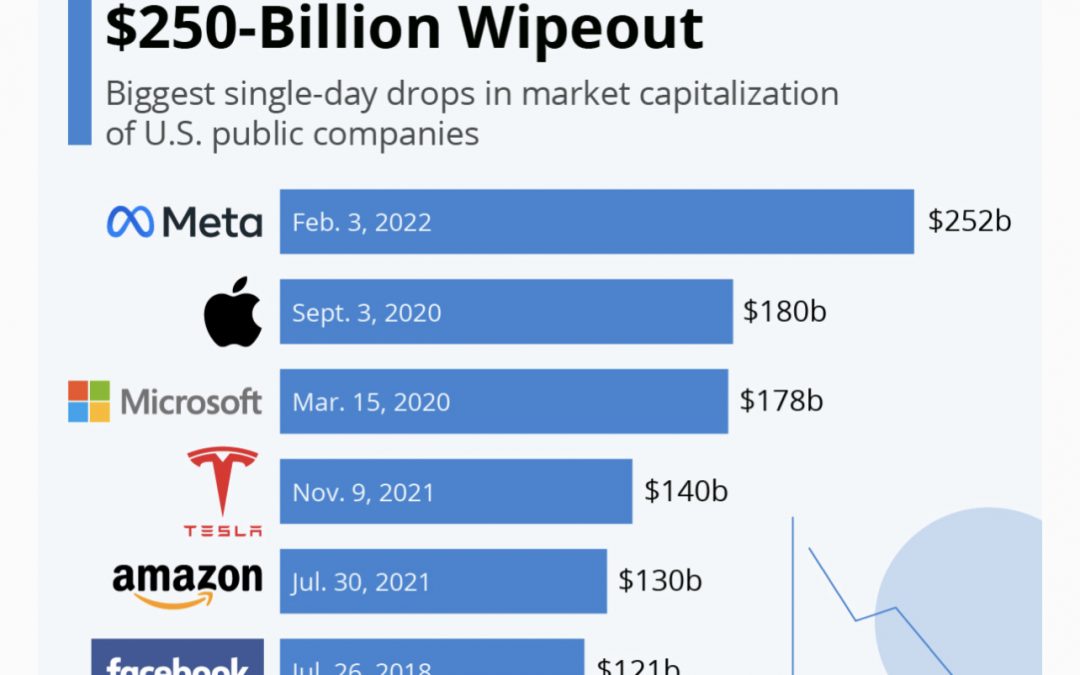
Tech stocks- Dead ☠️ Cat 🐈⬛ Bounce
Tech Stocks Are Bouncing Back. Here’s Why.
Technology stocks are rebounding this week from their harsh selloff. The stars appear to be aligning for a move higher in these stocks, for now.
The technology-heavy Nasdaq Composite has risen more than 3% this week, as it tries to work its way out of correction territory. The index is still down about 10% from its Nov. 19 all-time high, though it had fallen as much as 17% from that level in late January.
The correction has been driven mostly by rising bond yields, as markets expect the Federal Reserve to lift interest rates to combat high inflation. The Fed will also soon reduce the size of its balance sheet, which means it will drive less money into the bond market—another factor dragging down bond prices and lifting yields. The 10-year Treasury yield hit a pandemic-era closing high of 1.96% on Tuesday, compared with 1.55% on Nov. 19. Higher long-dated bond yields make future profits less valuable—and many tech companies are valued based on their expected profits many years down the line.
There are three main factors helping kick-start tech stocks’ recovery. The first is that bond yields are taking a break from surging. The 10-year yield stepped back from its Tuesday high, trading recently at 1.94%. While this is still an elevated level, investors are likely pleased to see the yield finally go somewhere besides up. It could also be a signal that tech stocks’ valuations are almost finished plummeting. The Nasdaq’s aggregate forward price-to-earnings ratio has already fallen to 28.3 times from 32.7 times Nov. 19.
Higher-than-expected earnings could then lift these large market-cap stocks. Fourth-quarter earnings for S&P 500 tech companies, in aggregate, have beaten analyst estimates by 8.6% so far, according to Credit Suisse data.
Yes, Meta Platforms (FB) and Netflix (NFLX) released dismal earnings reports, but those resulted from company-specific problems. Earnings from Amazon.com (AMZN), Snap (SNAP), and Alphabet (GOOGL), all impressed investors.
“Despite the headlines on Meta and other visible tech companies, fourth quarter earnings for the sector are coming in really well,” said Dave Donabedian, chief investment officer of CIBC Private Wealth Management.
As a result, some investors are allocating a little more money to tech stocks in their portfolios, after dumping such shares in January. This week’s move higher in tech stocks is “totally positioning,” said Dennis DeBusschere, founder of 22V Research.
All of these developments are positive for tech stocks right now, but it remains to be seen whether the recovery will stick in the coming weeks. The 10-year yield could resume its rise and move above 2%, as annual inflation for the longer-term is expected to be above 2% (Investors normally demand a rate of return higher than the inflation rate.) That means earnings multiples for tech stocks might have a little more room to decline from here as well. Consistent with that, investors are only buying names in the sector “gingerly,” DeBusschere said. “I don’t think there’s any real desire for anyone to take a high-conviction view right now,” he adds.
At the very least, perhaps the worst is over for tech.
Write to Jacob Sonenshine at jacob.sonenshine@barrons.com
Higher-than-expected earnings could then lift these large market-cap stocks. Fourth-quarter earnings for S&P 500 tech companies, in aggregate, have beaten analyst estimates by 8.6% so far, according to Credit Suisse data.
Yes, Meta Platforms (FB) and Netflix (NFLX) released dismal earnings reports, but those resulted from company-specific problems. Earnings from Amazon.com (AMZN), Snap (SNAP), and Alphabet (GOOGL), all impressed investors.
“Despite the headlines on Meta and other visible tech companies, fourth quarter earnings for the sector are coming in really well,” said Dave Donabedian, chief investment officer of CIBC Private Wealth Management.
As a result, some investors are allocating a little more money to tech stocks in their portfolios, after dumping such shares in January. This week’s move higher in tech stocks is “totally positioning,” said Dennis DeBusschere, founder of 22V Research.
All of these developments are positive for tech stocks right now, but it remains to be seen whether the recovery will stick in the coming weeks. The 10-year yield could resume its rise and move above 2%, as annual inflation for the longer-term is expected to be above 2% (Investors normally demand a rate of return higher than the inflation rate.) That means earnings multiples for tech stocks might have a little more room to decline from here as well. Consistent with that, investors are only buying names in the sector “gingerly,” DeBusschere said. “I don’t think there’s any real desire for anyone to take a high-conviction view right now,” he adds.
At the very least, perhaps the worst is over for tech.
Write to Jacob Sonenshine at jacob.sonenshine@barrons.com
Higher-than-expected earnings could then lift these large market-cap stocks. Fourth-quarter earnings for S&P 500 tech companies, in aggregate, have beaten analyst estimates by 8.6% so far, according to Credit Suisse data.
Yes, Meta Platforms (FB) and Netflix (NFLX) released dismal earnings reports, but those resulted from company-specific problems. Earnings from Amazon.com (AMZN), Snap (SNAP), and Alphabet (GOOGL), all impressed investors.
“Despite the headlines on Meta and other visible tech companies, fourth quarter earnings for the sector are coming in really well,” said Dave Donabedian, chief investment officer of CIBC Private Wealth Management.
As a result, some investors are allocating a little more money to tech stocks in their portfolios, after dumping such shares in January. This week’s move higher in tech stocks is “totally positioning,” said Dennis DeBusschere, founder of 22V Research.
All of these developments are positive for tech stocks right now, but it remains to be seen whether the recovery will stick in the coming weeks. The 10-year yield could resume its rise and move above 2%, as annual inflation for the longer-term is expected to be above 2% (Investors normally demand a rate of return higher than the inflation rate.) That means earnings multiples for tech stocks might have a little more room to decline from here as well. Consistent with that, investors are only buying names in the sector “gingerly,” DeBusschere said. “I don’t think there’s any real desire for anyone to take a high-conviction view right now,” he adds.
At the very least, perhaps the worst is over for tech.
Write to Jacob Sonenshine at jacob.sonenshine@barrons.com
Higher-than-expected earnings could then lift these large market-cap stocks. Fourth-quarter earnings for S&P 500 tech companies, in aggregate, have beaten analyst estimates by 8.6% so far, according to Credit Suisse data.
Yes, Meta Platforms (FB) and Netflix (NFLX) released dismal earnings reports, but those resulted from company-specific problems. Earnings from Amazon.com (AMZN), Snap (SNAP), and Alphabet (GOOGL), all impressed investors.
“Despite the headlines on Meta and other visible tech companies, fourth quarter earnings for the sector are coming in really well,” said Dave Donabedian, chief investment officer of CIBC Private Wealth Management.
As a result, some investors are allocating a little more money to tech stocks in their portfolios, after dumping such shares in January. This week’s move higher in tech stocks is “totally positioning,” said Dennis DeBusschere, founder of 22V Research.
All of these developments are positive for tech stocks right now, but it remains to be seen whether the recovery will stick in the coming weeks. The 10-year yield could resume its rise and move above 2%, as annual inflation for the longer-term is expected to be above 2% (Investors normally demand a rate of return higher than the inflation rate.) That means earnings multiples for tech stocks might have a little more room to decline from here as well. Consistent with that, investors are only buying names in the sector “gingerly,” DeBusschere said. “I don’t think there’s any real desire for anyone to take a high-conviction view right now,” he adds.
At the very least, perhaps the worst is over for tech.
Write to Jacob Sonenshine at jacob.sonenshine@barrons.com
Higher-than-expected earnings could then lift these large market-cap stocks. Fourth-quarter earnings for S&P 500 tech companies, in aggregate, have beaten analyst estimates by 8.6% so far, according to Credit Suisse data.
Yes, Meta Platforms (FB) and Netflix (NFLX) released dismal earnings reports, but those resulted from company-specific problems. Earnings from Amazon.com (AMZN), Snap (SNAP), and Alphabet (GOOGL), all impressed investors.
“Despite the headlines on Meta and other visible tech companies, fourth quarter earnings for the sector are coming in really well,” said Dave Donabedian, chief investment officer of CIBC Private Wealth Management.
As a result, some investors are allocating a little more money to tech stocks in their portfolios, after dumping such shares in January. This week’s move higher in tech stocks is “totally positioning,” said Dennis DeBusschere, founder of 22V Research.
All of these developments are positive for tech stocks right now, but it remains to be seen whether the recovery will stick in the coming weeks. The 10-year yield could resume its rise and move above 2%, as annual inflation for the longer-term is expected to be above 2% (Investors normally demand a rate of return higher than the inflation rate.) That means earnings multiples for tech stocks might have a little more room to decline from here as well. Consistent with that, investors are only buying names in the sector “gingerly,” DeBusschere said. “I don’t think there’s any real desire for anyone to take a high-conviction view right now,” he adds.
At the very least, perhaps the worst is over for tech.
Write to Jacob Sonenshine at jacob.sonenshine@barrons.com
Higher-than-expected earnings could then lift these large market-cap stocks. Fourth-quarter earnings for S&P 500 tech companies, in aggregate, have beaten analyst estimates by 8.6% so far, according to Credit Suisse data.
Yes, Meta Platforms (FB) and Netflix (NFLX) released dismal earnings reports, but those resulted from company-specific problems. Earnings from Amazon.com (AMZN), Snap (SNAP), and Alphabet (GOOGL), all impressed investors.
“Despite the headlines on Meta and other visible tech companies, fourth quarter earnings for the sector are coming in really well,” said Dave Donabedian, chief investment officer of CIBC Private Wealth Management.
As a result, some investors are allocating a little more money to tech stocks in their portfolios, after dumping such shares in January. This week’s move higher in tech stocks is “totally positioning,” said Dennis DeBusschere, founder of 22V Research.
All of these developments are positive for tech stocks right now, but it remains to be seen whether the recovery will stick in the coming weeks. The 10-year yield could resume its rise and move above 2%, as annual inflation for the longer-term is expected to be above 2% (Investors normally demand a rate of return higher than the inflation rate.) That means earnings multiples for tech stocks might have a little more room to decline from here as well. Consistent with that, investors are only buying names in the sector “gingerly,” DeBusschere said. “I don’t think there’s any real desire for anyone to take a high-conviction view right now,” he adds.
At the very least, perhaps the worst is over for tech.

